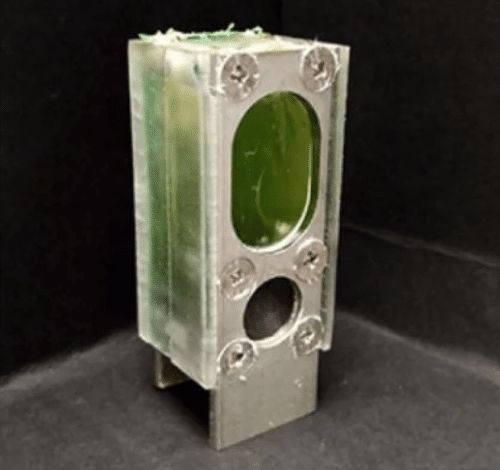Researchers from the University of Cambridge’s Department of Biochemistry used algae to power an Arm CPU for six months!
The scientists created an AA-battery-sized gadget that houses an algae called Synechocystis that naturally harvests energy from the sun through photosynthesis, according to their article titled Powering a microprocessor by photosynthesis.

Credit: Paolo Bombelli
The researchers used an aluminium anode to convert the gathered energy into current, which they then put into a board with an Arm Cortex M0+ CPU. That device, according to Arm, is its most energy-efficient architecture, with one model consuming only 3.8 microwatts per megahertz. However, the M0+ performs admirably in small, embedded devices that require extended battery life — a feature that makes it suitable for Internet of Things (IoT) applications.
Many of those technologies, according to Professor Christopher Howe of Cambridge’s Department of Biochemistry, will perform best if they can create their own power rather than relying on stored electricity. Batteries and solar cells can do the job, but they use rare metals and toxic chemicals, and they eventually wear out, according to the Professor.
The biological photovoltaic cell performs better since it produces power continually, even in low light or at night, because the algae it contains appears to continue processing energy after the sun has set. The paper’s test unit was used in semi-outdoor circumstances under natural light with concomitant temperature changes. The gadget was also made of common, sturdy, affordable, and mainly recyclable materials, according to the project’s creators.
Arm Research designed the trial’s test chip, manufactured the board, and set up the cloud data gathering interface utilised in the tests. This is pure research, with no indication of eventual commercialization. However, as the study points out, mankind wants to deploy a trillion IoT devices over the next few decades, so suggestions on how to do so in a sustainable manner are likely to be welcomed.










